
Top 5 cactus care mistakes and how to correct them
Cacti are hardy and low-maintenance, but they still have specific needs. Overwatering, poor soil, and lack of light are just a few common cactus care mistakes that can cause problems. Learn how to avoid the top five pitfalls and keep your cactus healthy, happy, and thriving indoors.
Cacti have a reputation for being easy plants to look after. Their ability to survive in the world’s toughest deserts makes them seem almost invincible, but many cactus owners soon find that these hardy plants are not immune to poor care. Cactus care mistakes are incredibly common, especially among beginners. Missteps like overwatering, using the wrong soil, and giving insufficient light can quickly lead to serious problems.
Knowing how to recognize these issues early makes all the difference. Even something that seems harmless, like picking the wrong pot or feeding too often, can be bad news. This article will show you how to identify and fix the five most common cactus care mistakes. You will also learn simple, practical solutions that will help your cactus stay strong and healthy.
5 most common cactus care mistakes
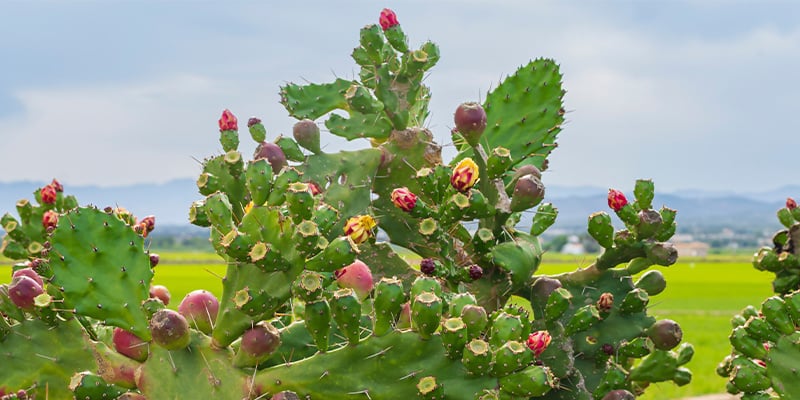
Cacti might be tougher than most houseplants, but they still require the right care to thrive. Here are the most common cactus care mistakes and how you can avoid them.
Overwatering cacti
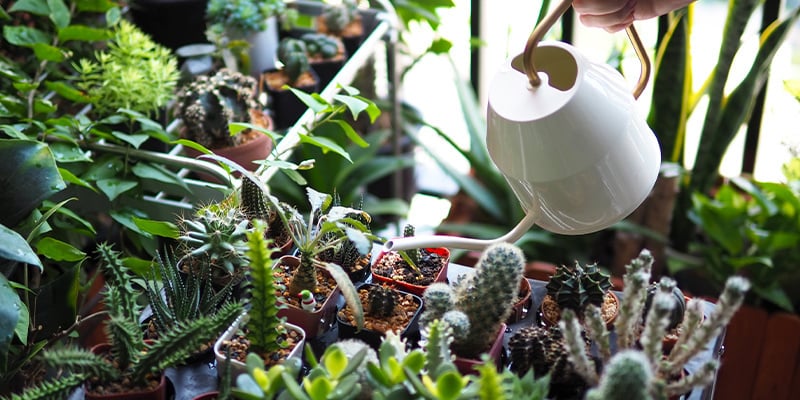
Overwatering is perhaps the most common cactus care mistake. Cacti are desert plants that have adapted to survive with minimal rainfall, and as such their roots are designed to absorb water quickly and then stay dry for long periods. When we water them like regular houseplants, it causes their roots to sit in damp soil for too long. This environment promotes root rot, bacterial infections, and fungal problems.
Recognizing the signs early can save your plant. Overwatering cactus symptoms include:
- Yellowing stems or patches on the plant
- Stems that feel soft or mushy to the touch
- Shriveled, blackened, or foul-smelling roots when inspected
If left unchecked, these symptoms worsen, and the plant may collapse completely.
How to fix it:
- Always check the soil before watering. Insert your finger about 2 inches deep; if it feels dry, it is safe to water.
- Use pots with drainage holes to allow excess water to escape.
- Choose cactus watering tools like long-spout watering cans that deliver controlled amounts.
- Water much less frequently during winter. In colder months, cacti often go dormant and require only minimal moisture, perhaps once every four to six weeks.
Remember that some cacti species naturally shrivel slightly between waterings. This is normal and not always a sign they need urgent watering.
Using the wrong soil mix
Choosing the best soil mix for indoor cacti is one of the simplest ways to prevent many common problems. Many new cactus owners simply pot their plants in whatever soil they have at home. Unfortunately, standard potting compost holds onto water for too long, which is a death trap for cacti.
Cactus roots need fast drainage and lots of air to stay healthy. Even if the top layer of soil seems dry, moisture trapped deeper inside can harm your cactus.
Using the wrong soil can cause:
- Roots to rot even if watering is infrequent
- Fungal growth in the soil
- Slow or stunted plant growth
How to fix it:
- Buy a cactus-specific soil mix from a garden center. These mixes are designed to replicate desert conditions, allowing water to drain away quickly.
- Alternatively, you can make your own mix. Combine two parts coarse sand, two parts cactus soil, and one part perlite or pumice.
- Avoid using garden soil, as it is too heavy and often carries pests or diseases.
- Repot your cactus if it is already in inappropriate soil. This gives the plant a fresh start and a better chance of survival.
- Keep the soil loose when potting—do not press it down hard around the roots.
Insufficient light
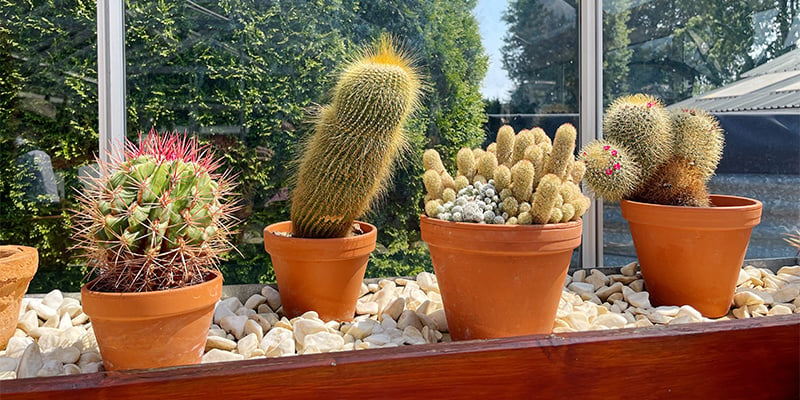
Light is essential for healthy cactus growth. In the wild, cacti enjoy full sun exposure for most of the day. Indoor conditions often fall short, causing problems like etiolation, where the plant stretches abnormally in search of light. Insufficient light also weakens the cactus, making it more prone to pests and diseases.
Signs that your cactus is not getting enough light include:
- Thin, elongated stems
- A leaning or bent plant
- Pale or dull color instead of a healthy green
- Very slow or no growth during active months
How to fix it:
- Place your cactus in the brightest spot available, ideally a south- or west-facing window.
- If you cannot provide enough natural sunlight, consider using grow lights for cacti. LED grow lights that mimic full-spectrum sunlight work best.
- Position the light about 6–12 inches above the cactus and keep it on for 12–14 hours a day.
- Rotate your cactus every two to four weeks so all sides receive equal light exposure. This prevents uneven growth.
- Be cautious of intense midday sun for young or sensitive species. In summer, use sheer curtains to soften the light if needed.
- Knowing how much sunlight indoor cacti need will make a big difference to their appearance and health.
Choosing the wrong pot size
Pot size is vital for all plants, including cacti. Using a pot that is too big or too small can cause real problems. A pot that is too large will hold excess moisture, raising the risk of root rot and common cactus pests. A pot that is too small can squeeze the roots, slowing growth and leading to a stressed plant.
Signs you might be using the wrong pot size:
- Stagnant growth despite correct care
- Roots visibly circling around the bottom of the pot (root-bound)
- Soil staying wet for too long after watering
How to fix it:
- Choose a pot only slightly larger than the cactus’s root ball—generally half an inch wider.
- Always use pots made from breathable materials like terracotta or unglazed clay.
- Ensure the pot has at least one drainage hole at the bottom.
- Repot your cactus every two to three years, or whenever you see roots growing out of the drainage holes.
- Avoid deep pots unless you are growing deep-rooted cactus species like saguaro or organ pipe cacti.
- Getting the pot size right will give your cactus the best chance to grow naturally without unnecessary risks.
Overfertilization
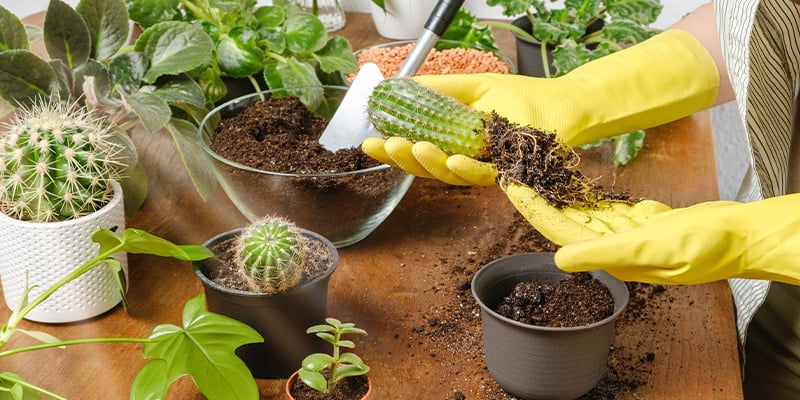
Cacti are slow growers, and they do not need heavy feeding. Many owners mistakenly think that extra fertilizer will speed up growth, but it often has the opposite effect. Overfertilization causes lush, weak growth that collapses under its own weight, leading to broken stems and a stressed plant.
Symptoms of overfertilization include:
- Soft, swollen stems
- Unnatural, floppy new growth
- Leaf discoloration (where present)
- Increased pest problems
How to fix it:
- Use a balanced, diluted cactus fertilizer (such as a 10-10-10 or 5-10-5 formula).
- Fertilize only during the growing season—spring and summer—and no more than once a month.
- In fall and winter, avoid fertilizing altogether, as most cacti enter dormancy.
- Flush the soil occasionally by watering deeply and letting excess water drain out. This helps wash away built-up salts and fertilizer residues.
- Always follow the instructions on the fertilizer package carefully.
By feeding your cactus correctly, you can support steady, healthy growth without putting the plant at risk.
Looking after cacti: Easier than you think
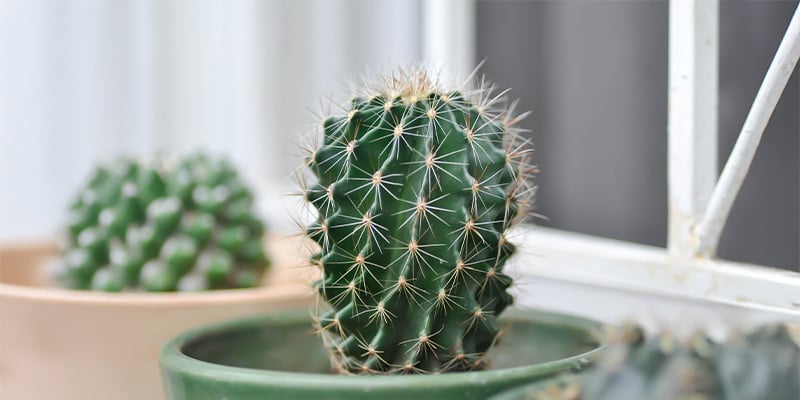
Caring for a cactus properly does not need to be complicated. Most problems stem from a few common mistakes: overwatering, using the wrong soil, not giving enough light, planting in the wrong size pot, or feeding too often. Once you understand how these factors affect your cactus, you can create a much healthier environment for your plant.
If you have already made some of these cactus care mistakes, do not be discouraged. Knowing how to revive a dying cactus is part of learning how to care for them better. Adjust your watering, improve the soil, give them proper light, and be patient. Recovery can take time, but with consistent care, your cactus will often bounce back stronger than before.
-
 6 min
March 12, 2025
How to grow and care for the San Pedro cactus
Growing plants is a very satisfying endeavor—even more so when they make you trip! Here, we'll look at how to grow San Pedro—an iconic psychoactive cactus—from seeds and cuttings.
6 min
March 12, 2025
How to grow and care for the San Pedro cactus
Growing plants is a very satisfying endeavor—even more so when they make you trip! Here, we'll look at how to grow San Pedro—an iconic psychoactive cactus—from seeds and cuttings.
-
 5 min
September 27, 2024
Mescaline VS Psilocybin: What's The Difference?
When it comes to psychedelics, there's no shortage of options, but if you had to choose between two naturally occurring compounds—mescaline or psilocybin—which would you pick? Keep reading as we...
5 min
September 27, 2024
Mescaline VS Psilocybin: What's The Difference?
When it comes to psychedelics, there's no shortage of options, but if you had to choose between two naturally occurring compounds—mescaline or psilocybin—which would you pick? Keep reading as we...
-
 6 min
July 11, 2024
The Ultimate Mescaline Cactus Guide
Mescaline is a time-honoured but often misunderstood drug. Here we aim to demystify it somewhat, and give a general overview of everything you need to know about mescaline cacti!
6 min
July 11, 2024
The Ultimate Mescaline Cactus Guide
Mescaline is a time-honoured but often misunderstood drug. Here we aim to demystify it somewhat, and give a general overview of everything you need to know about mescaline cacti!
-
 3 min
October 6, 2018
Top 5 Mescaline Cacti
Mescaline occupies the esteemed podium of naturally occurring hallucinogens along with DMT and psilocybin. The alkaloid can be found in a variety of cactus species. Here are the top 5...
3 min
October 6, 2018
Top 5 Mescaline Cacti
Mescaline occupies the esteemed podium of naturally occurring hallucinogens along with DMT and psilocybin. The alkaloid can be found in a variety of cactus species. Here are the top 5...





 United States
United States










